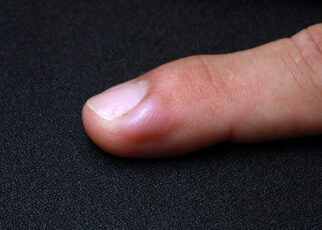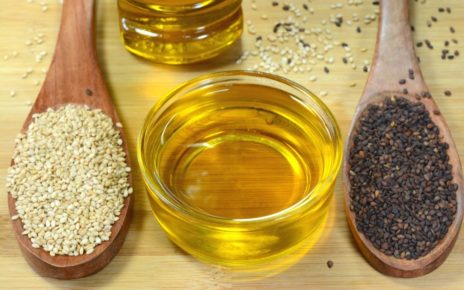An ingrown fingernail usually doesn’t require immediate medical attention, but if it displays signs of infection, it’s essential to seek professional help.
Ingrown nails can affect not only your toes but also your fingernails. However, this is less common in fingers because you don’t typically force your fingers into ill-fitting shoes. Additionally, the natural shape of your fingernails reduces the likelihood of them becoming ingrown.
What is an Ingrown Fingernail?
Your nails and skin consist primarily of a protein called keratin. As your finger’s keratinized cells become densely layered, nails are formed and pushed towards the surface. The ridges on your nails correspond to the ridges on the skin beneath them, securing your nails in place.
However, when there is a change in the shape of your nail, the connection between the nail and the ridges holding it in place can weaken. This can result in the nail growing into the sides or corners of your skin, leading to what is commonly known as an ingrown nail. Various factors can contribute to this condition, including:
- Injury
- Fungal infection
- Abnormal nail growth, either excessively fast or too slow
- Improper nail trimming, such as leaving sharp edges
- Nail biting
Ingrown Fingernail Treatment
If the nail appears to be pressing into the skin or curving downward, it indicates an ingrown nail.
Individuals with diabetes, neuropathy, or circulation issues should avoid attempting home remedies for ingrown nails. In such cases, seeking professional medical treatment for safe care is important.
Before attempting any home treatment for an ingrown nail, washing your hands with soap and water is essential.
Soaking
Soaking the finger can assist in promoting the outward growth of the ingrown nail naturally. This method is particularly effective for mild cases of ingrown nails that do not cause pain or other symptoms.
Follow these steps:
- Prepare a clean container filled with warm salt water.
- Immerse the affected hand in the water and soak for approximately 15–20 minutes.
- Rinse the hand thoroughly and pat it dry with a clean towel.
- Apply an antibiotic ointment to the affected area and loosely cover it with a bandage.
Using cotton or gauze
If soaking alone does not provide relief within a day or two, individuals can attempt a gentle method to encourage upward growth of the nail using cotton or gauze.
After soaking, take a small piece of clean gauze or cotton and carefully place it underneath the nail. This can alleviate pressure and discomfort by slightly separating the nail and the skin.
Ensure to replace the cotton at least once daily until the nail has fully grown and healed.
Dental floss
It can be challenging to insert a cotton piece under the nail in certain instances. In such cases, waxed dental floss can be a more convenient alternative.
Following the soaking and hand-washing routine, carefully guide a clean piece of dental floss beneath the ingrown edge of the nail.
Medical intervention
In cases where ingrown fingernail results in a severe infection, especially if an abscess develops, your doctor might suggest various medical procedures as treatment options.
Surgical treatment is seldom necessary for ingrown fingernails, as it is more frequently employed for ingrown toenails. However, if an ingrown nail fails to resolve naturally, it may be necessary to consult a family doctor or dermatologist for surgical intervention.
One commonly utilized procedure is nail avulsion, in which a section of the nail is removed to facilitate drainage and promote healing of the infected area. This procedure is typically conducted in the doctor’s office, with the use of local anaesthesia to ensure numbness in the area.
Ingrown Fingernail Infection
An ingrown nail can create a pathway for fungi or bacteria to enter the body through a skin break, leading to an infection. It is important to notify a doctor if any signs of infection emerge, such as:
- Pain
- Red streaks on the skin
- Pus or fluid discharge
- Redness
- Fever
To prevent infections, it is advisable to practice proper hand hygiene techniques. The CDC recommend washing hands with soap and running water for at least 20 seconds.
Individuals with long fingernails should also ensure thorough cleaning underneath the nails. After washing, hands and nails should be dried using a clean towel. The CDC emphasizes that long fingernails are more likely to harbour bacteria and germs, which can contribute to developing an infection.
In the case of a cut or break in the skin, it is recommended to apply antibiotic ointment and cover it with a clean bandage to help prevent the entry of germs.
Ingrown nail vs hangnail
A hangnail is a common issue which causes pain and redness near the fingernail’s edge. However, hangnails have different treatments and causes compared to ingrown nails.
Hangnails occur when skin cells separate and grow away from the surrounding skin, resulting in a spiky piece of skin next to the fingernail. Hangnails are not nails themselves but rather excess skin.
It is important not to bite or pull the hangnail to remove it, as this can cause an injury to the finger and potentially lead to an infection. Instead, thoroughly wash the area with soap and water, gently clip the hangnail using clean nail clippers, and cut it close to the base.
If the hangnail bleeds or causes pain, applying an antibiotic ointment for 24 hours can aid in healing the area.
Conclusion:
Ingrown fingernails are generally not considered serious and can be treated at home. Home remedies for ingrown nails include soaking the affected area, utilizing gauze or cotton, or gently lifting the nail up using dental floss.
However, if the ingrown nail exhibits signs of infection or the individual has underlying health conditions, it is advisable to seek medical attention from a doctor.
Discover more from Thenewsdoor
Subscribe to get the latest posts sent to your email.





